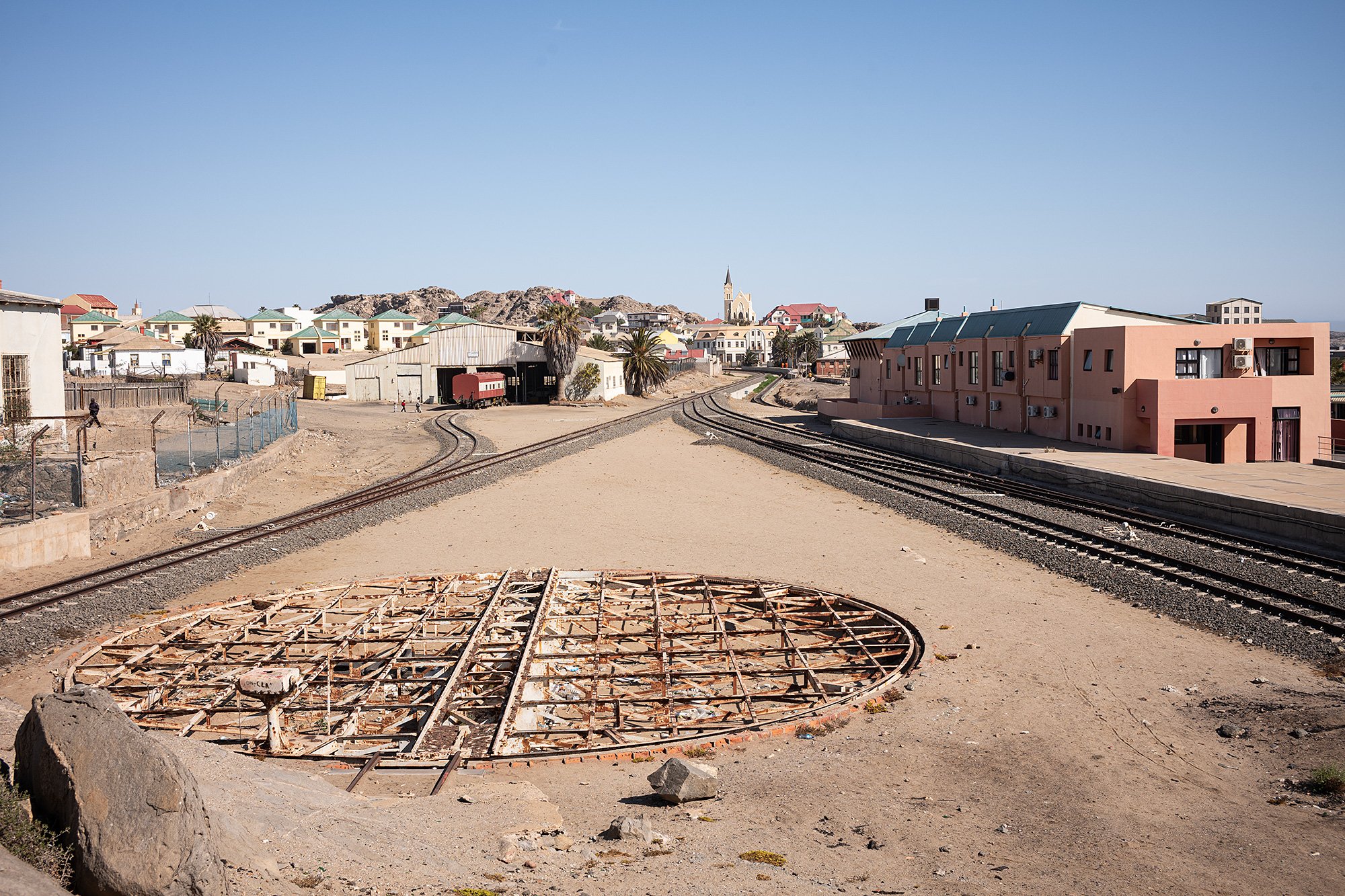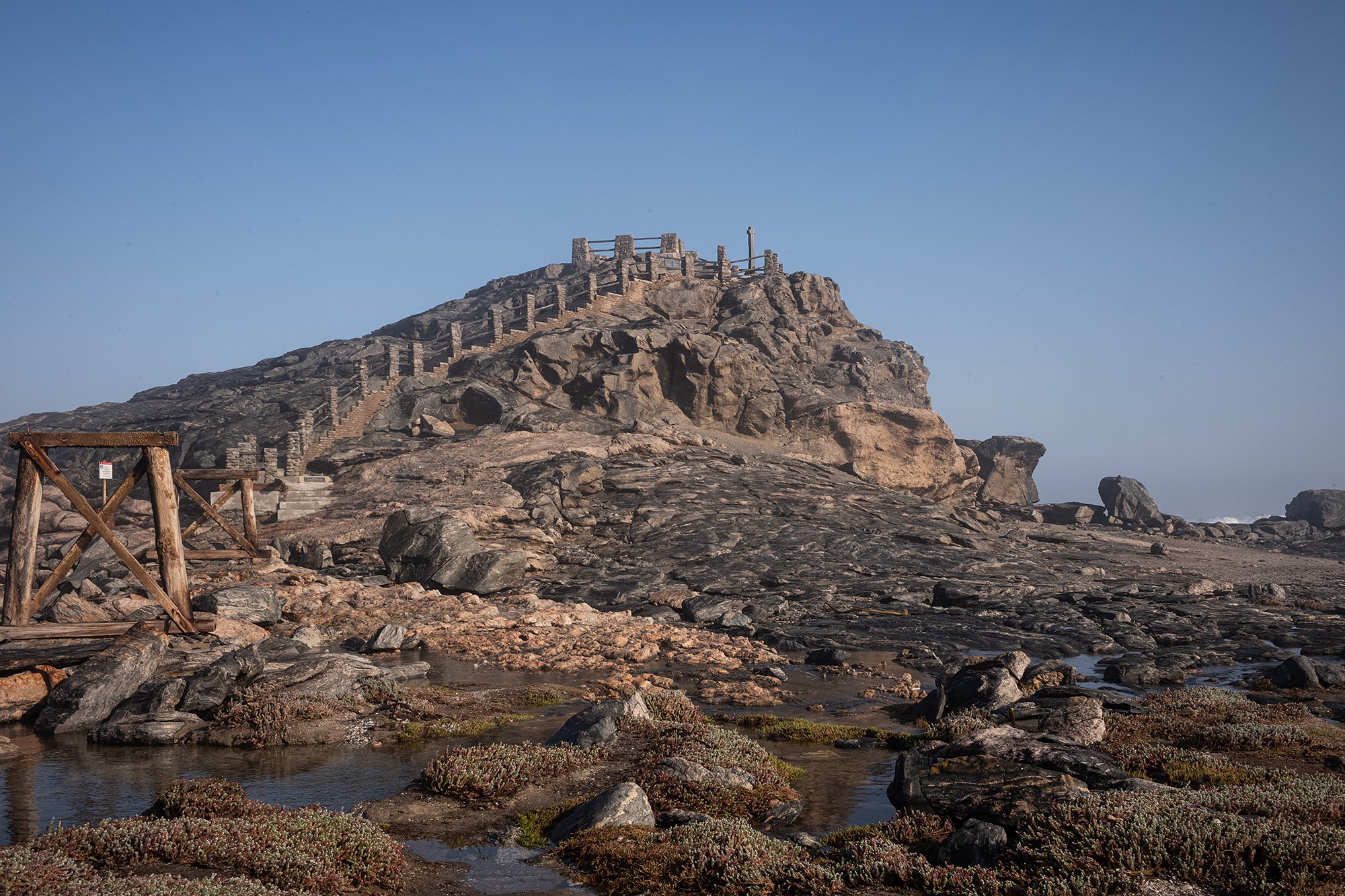
Namibia chapter six
Agate Beach, Halifax Island, and Diaz Point.
Returning from Kolmanskop I decide to take a minute and visit Agate Beach. Nearing town I take a right turn and find myself driving down a gavel road through a suburb of corregated metal structures. Outside, children play, a barber cuts hair.
I wind my way through town and come across a small lagoon dotted with flamingos. I stop the car and get out for a closer view until a sign stops me: WARNING! No unauthorized access allowed. Trespassers will be prosecuted according the Namibian Diamond Act. I get back in the car and continue on.


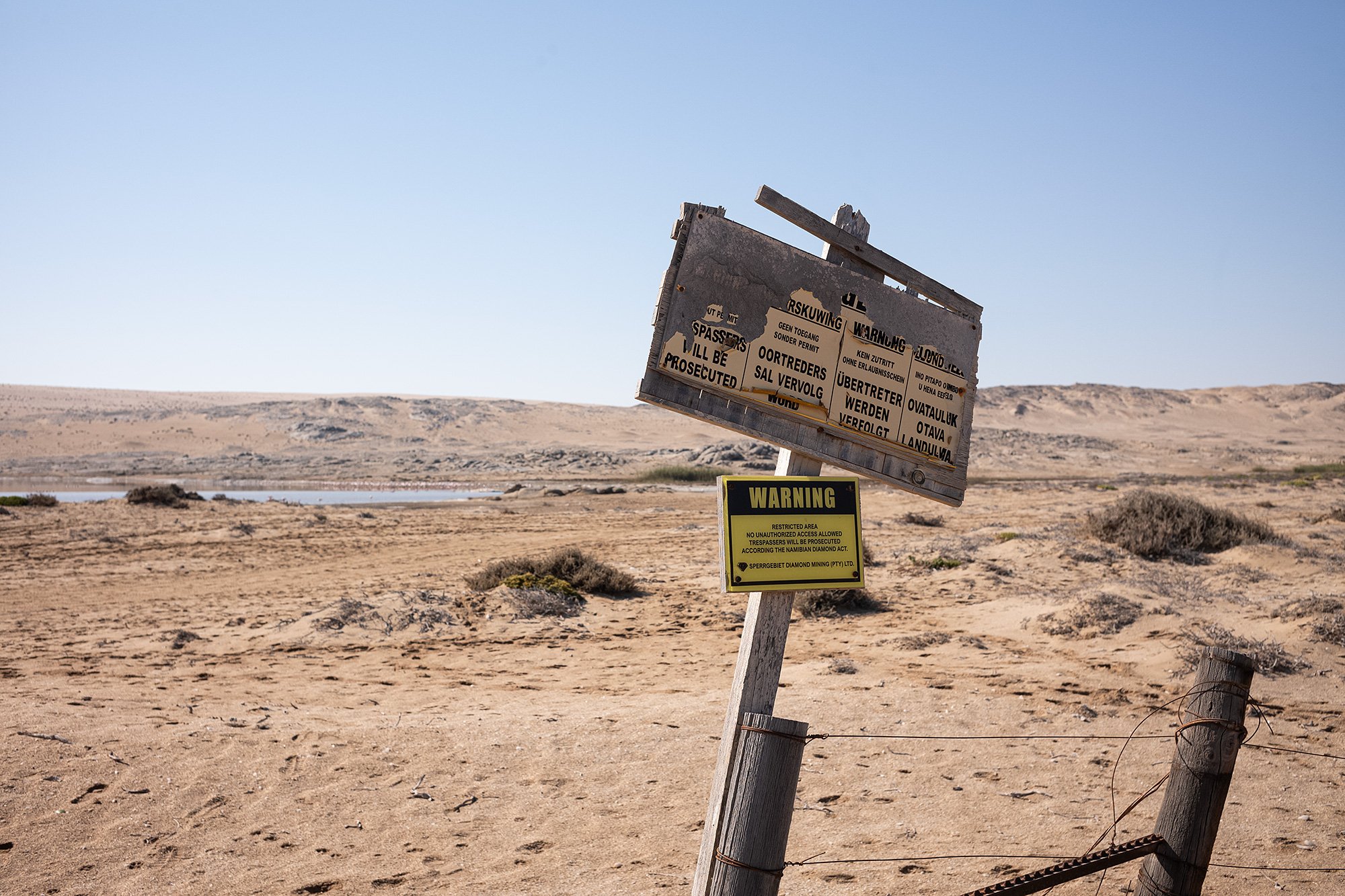
At the beach I park the car by a set of small dunes. Concrete grills and picnic areas dot the parking area and see the tracks of cars before me.
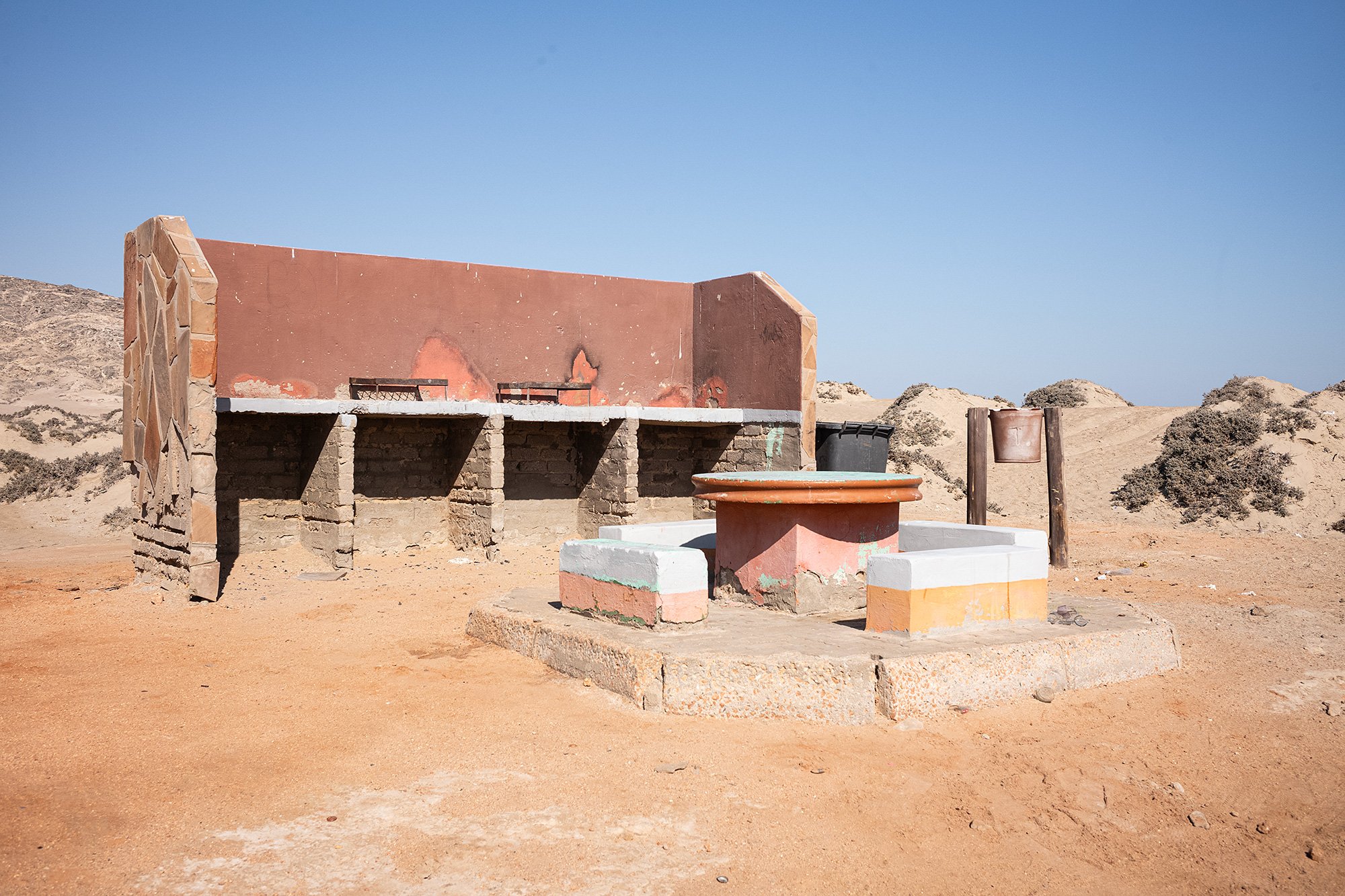
The beach is deserted save for one man standing alone in the distance. I take off my shoes and wade into the surf. I’ve brought my swim trunks, but the water is freezing and I can’t imagine that there are many who come to swim. I think back to yesterday, when Veronica told me the beach would be packed. I’m curious how many actually make it into the water.

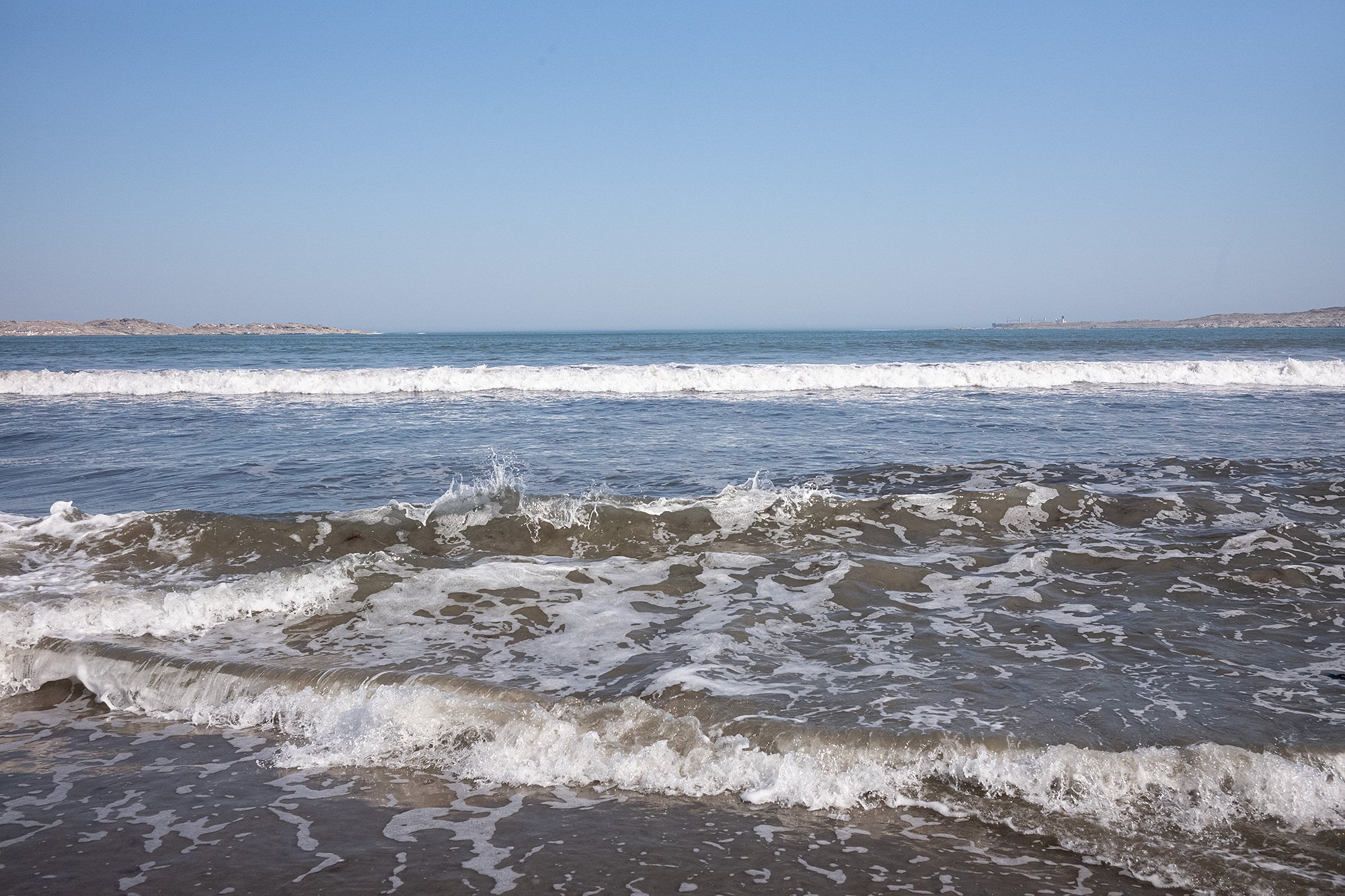
I follow another road back into town, driving down side streets in the direction of the ocean. When I reach the coast I discover a colorful sign spelling out the name of the town. Nearby sighposts mark the diestances from Lüderitz to other prominent cities in the world. New York, 11,823 km; Lüderitz Germany, 8,806 km; Cape Town, 870 km; Moscow, 9403 km.



I drive home and take lunch in town at Diaz coffee shop: fish with mashed potatoes. It’s a cute place, the tables made up with fishermen nets and barrels. I write postcards while I wait for my food to come.
Afterwards, I linger in the common room of my guesthouse, windows and doors open. The sound of the sea and the light of the setting sun stream into the room. Today’s cake is lemon, and I take warm slices from where it’s kept on the counter. I sit and eat and sip a cappucino until the sun goes down before retiring to my bungalow below.


Veronica has booked a catamaran tour for the next day to see the penguins on Halifax Island. It’ll be another early morning.
•
I take the wrong road to the docks and run to make it to the boat on time. I needn’t have worried. I’m not the last to board.
I take a seat in front of the forward cabin and settle in as we ease out of the bay. A large tanker is also under way and we wait patiently for it to arrange itself.
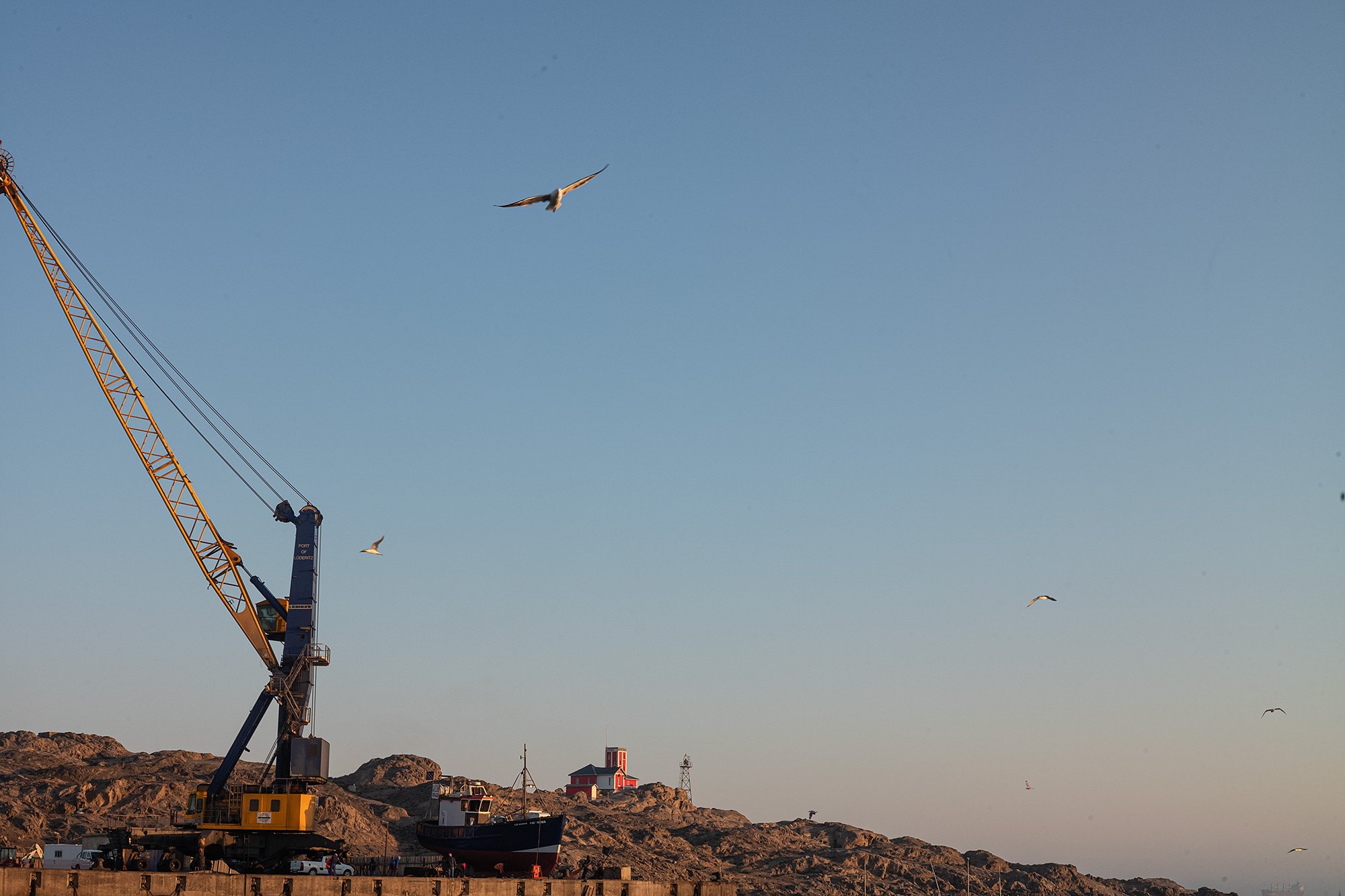
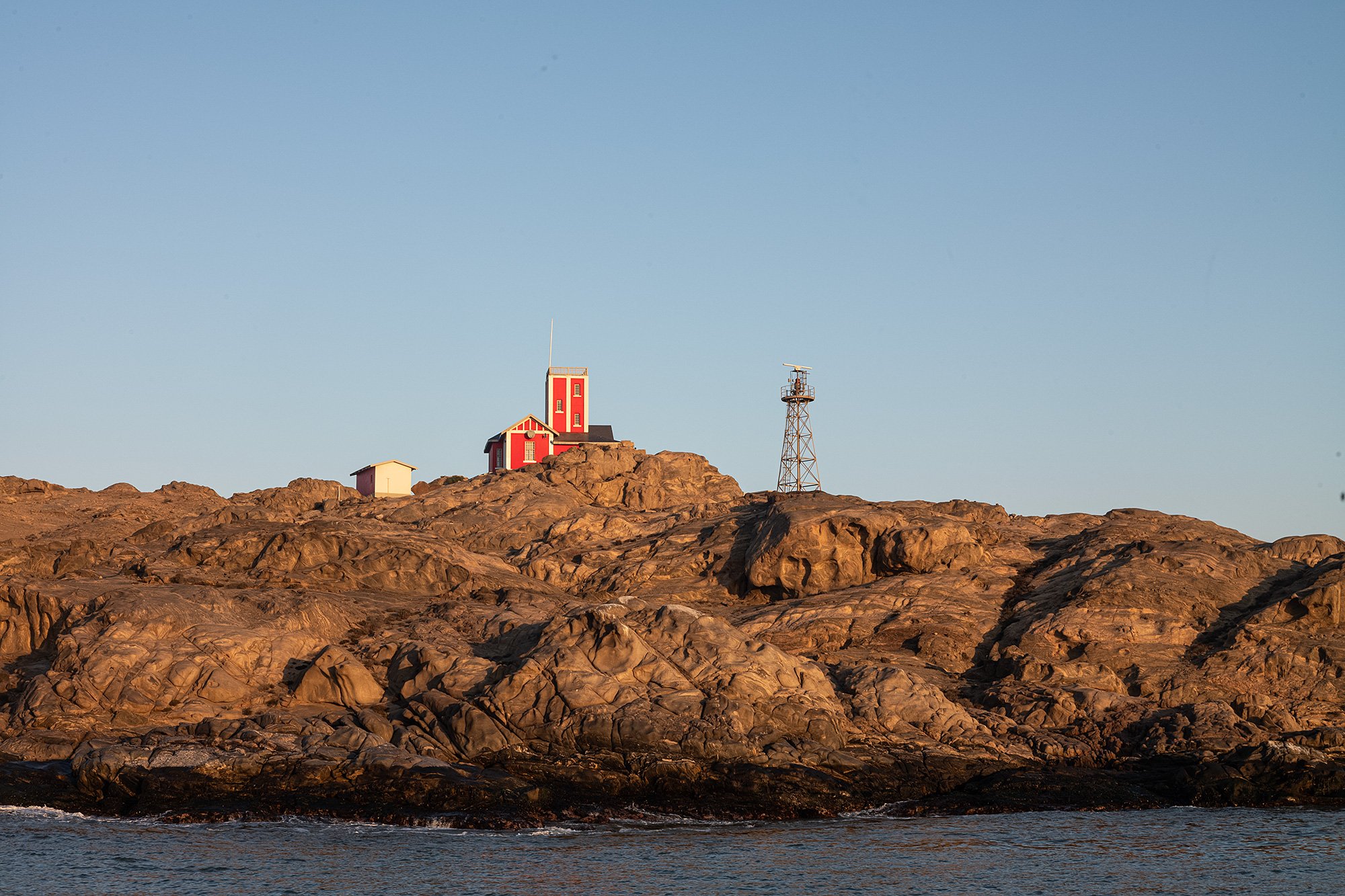
Leaving the protection of the cove we encouter larger swells. We can see the waves crash upon the shore. A mist has started to envelop us as we pass the lighthouse and head out towards Halifax Island. Looking back the lighthouse all but disappears; Diaz Point a shadowy presence in the foreground.
It’s a cold ride in the exposed front of the boat, but I love riding the waves with an unobstructed view of our destination. I pull a windbreaker from my pack and layer it on.


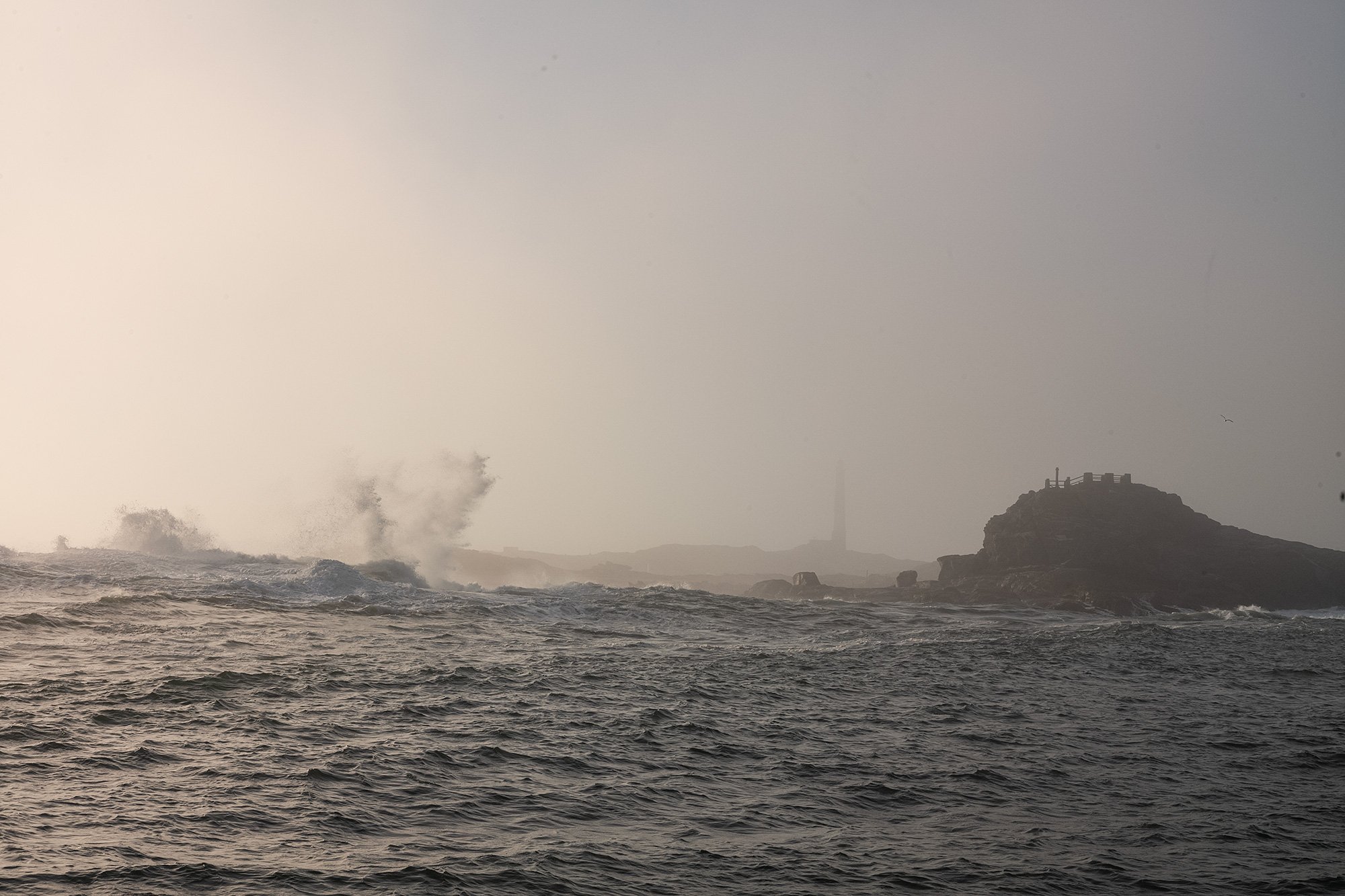
When we reach the island it’s shrouded in the morning mist. We hang back from the shore. A single flamingo stands upon the far shore. Small groups of African penguins collect before us.
Slowly, the haze lifts and we’re offered better views of the shore. Kristoff, our captain and guide, brings the boat around and we catch sight of a large group of cormorants sunning themselves on the beach. Krisoff points to the far hills where a large group of penguins have collected. The island boats around 1,400 breeding pairs as of a 2018 census, though the population has halved in the past 30 years. Once the colony numbered more than 100,000 penguins.
The buildings were erected and used by guano miners, though mining operations had ceased by the 1950s.

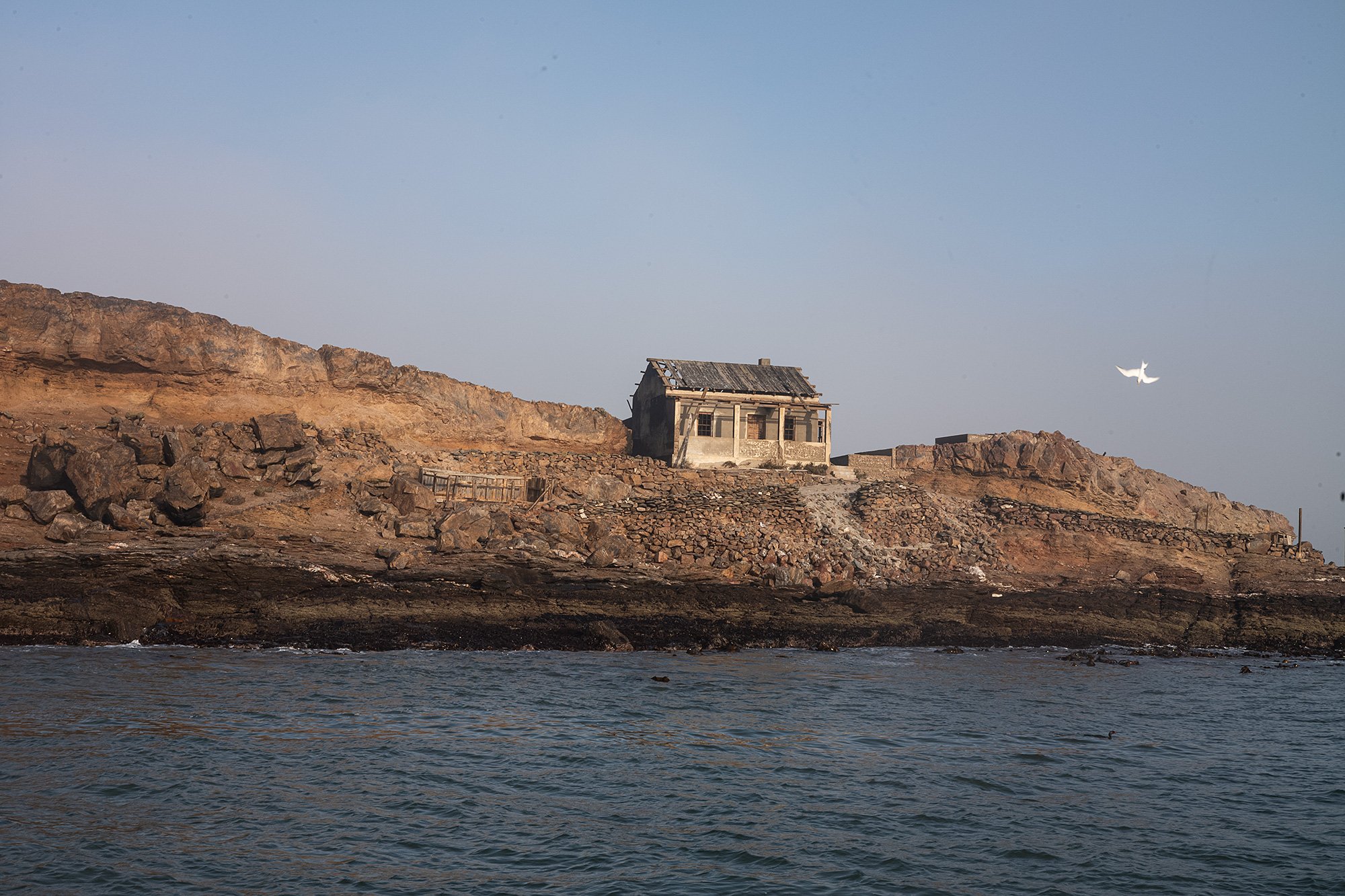

On our voyage back to Lüderitz we pass more cormorants on the shore. I think I spot a Haviside's dolphin as we appoach the entrance to the bay; I’m surprised at how small they are. Krisoff confirms their size. Seals play in the bay and we slow to have a look before continuing towards the dock.
I chat with Kristoff as we head to port. He’s from Keetmanshoop, though he’s been living in Lüderitz for the past 11 years. He had been working in sales but wanted to be outside. This opportunity came up and he jumped at the chance.
I ask him how Lüderitz has changed and he mentions how it’s about to explode. To accommodate the projected increase in population due to the discovery of oil they’re buiding another town inland with 1,000 housing units. I can’t imagine what the town will look like in another five years.

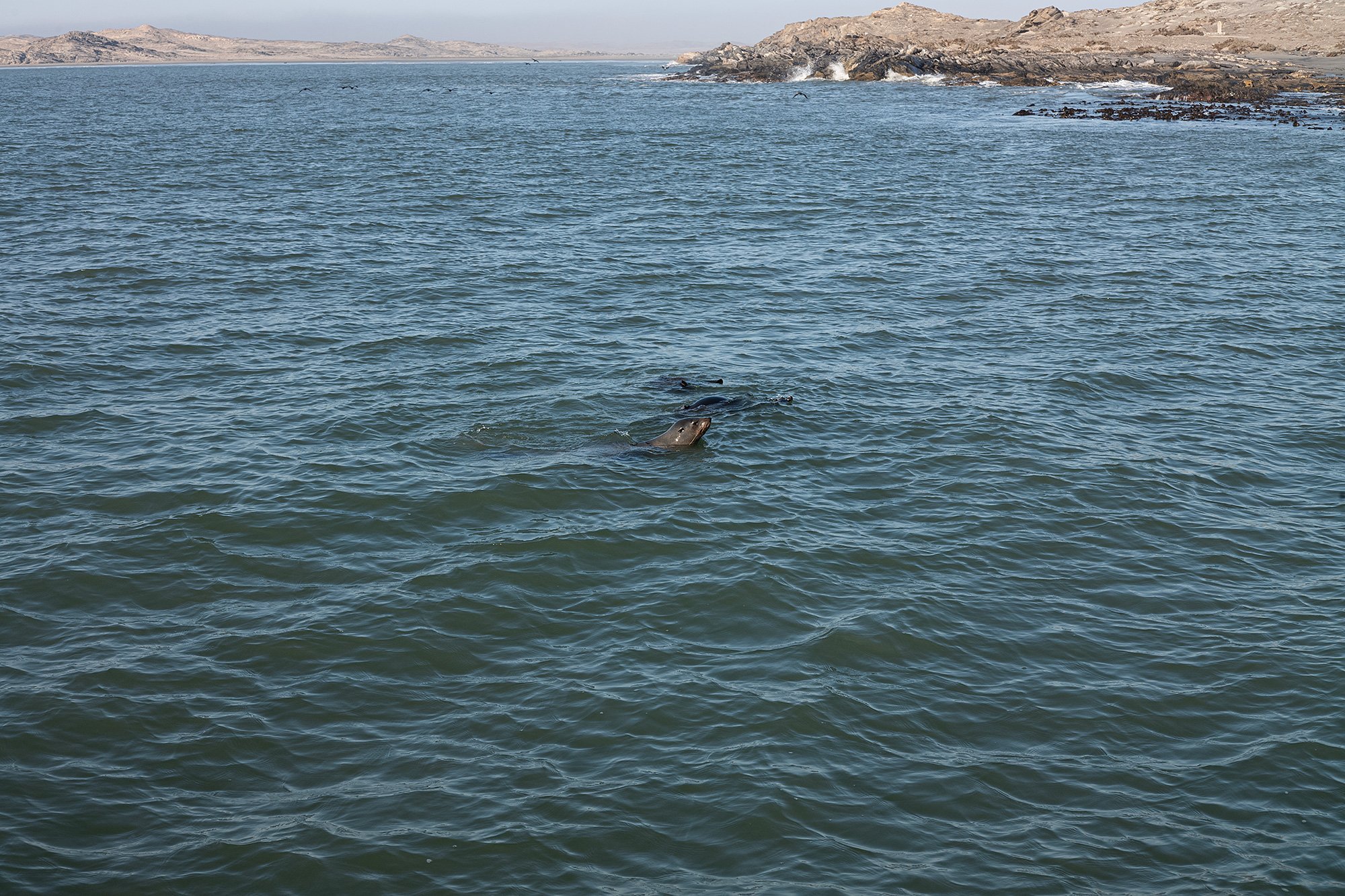

On my way home I take some time to admire the archiecture of the town, the German-inspired buildings and the more modern apartment complexes. It’s an interesting mix of styles, and a number of buildings are being renovated and painted. Again, I wonder what the town might look like in another five years.




I sleep in the next morning. At breakfast Saima asks if I’m planning to visit the Diaz Cross. She had recommended it the day before. I hadn’t yet considered how to spend my morning but her suggestion determines my actions. Yes, I tell her. I am.
I’m still adjusting to driving regularly and back the car carefully out of the lot and onto the B4. Near the edge of town I take a right and end up on another gravel road and follow the loop drive towards the lighthouse and the site of the cross. Along the way, I spot a group of flamingos grazing in the shallows.

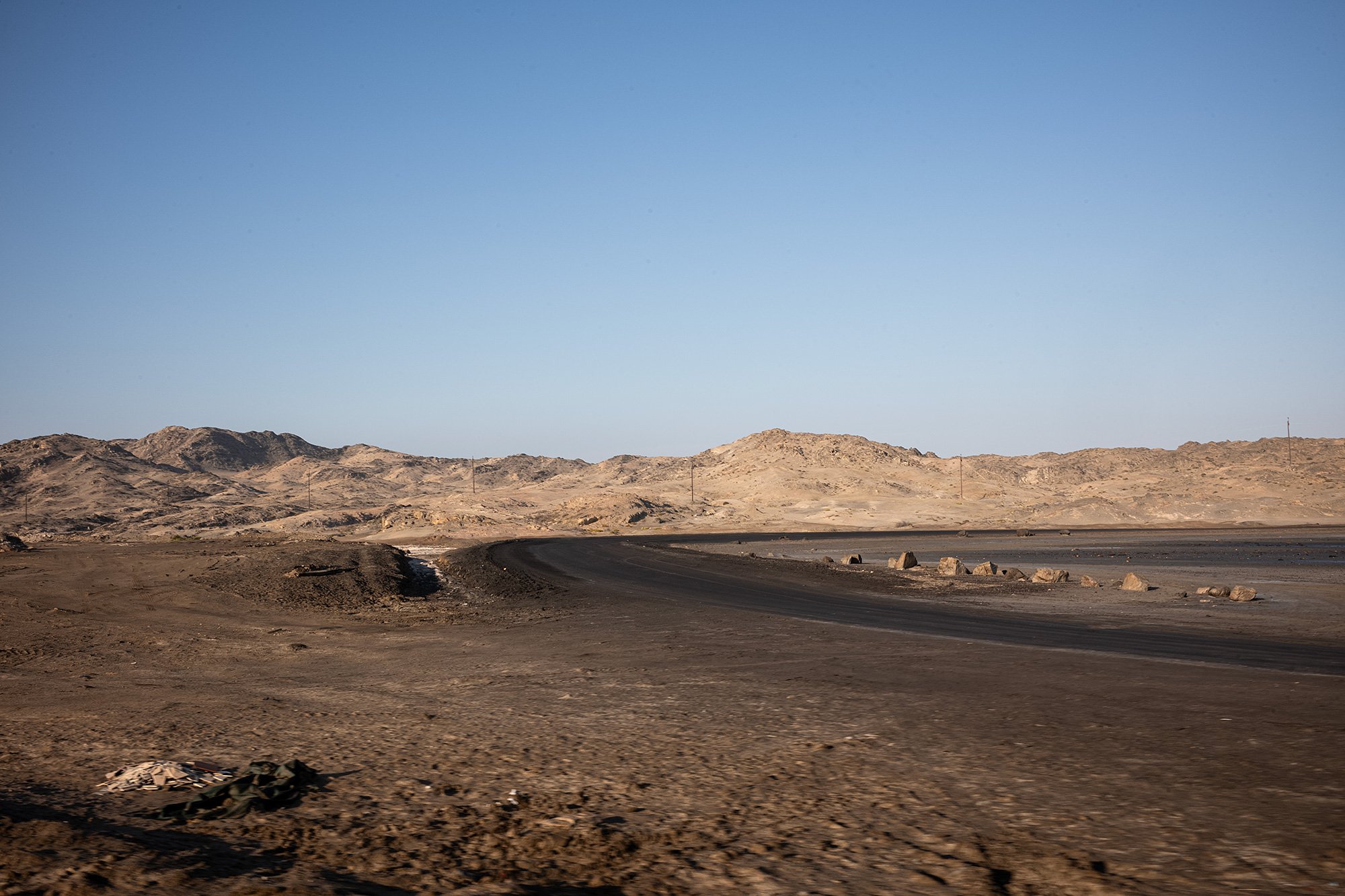
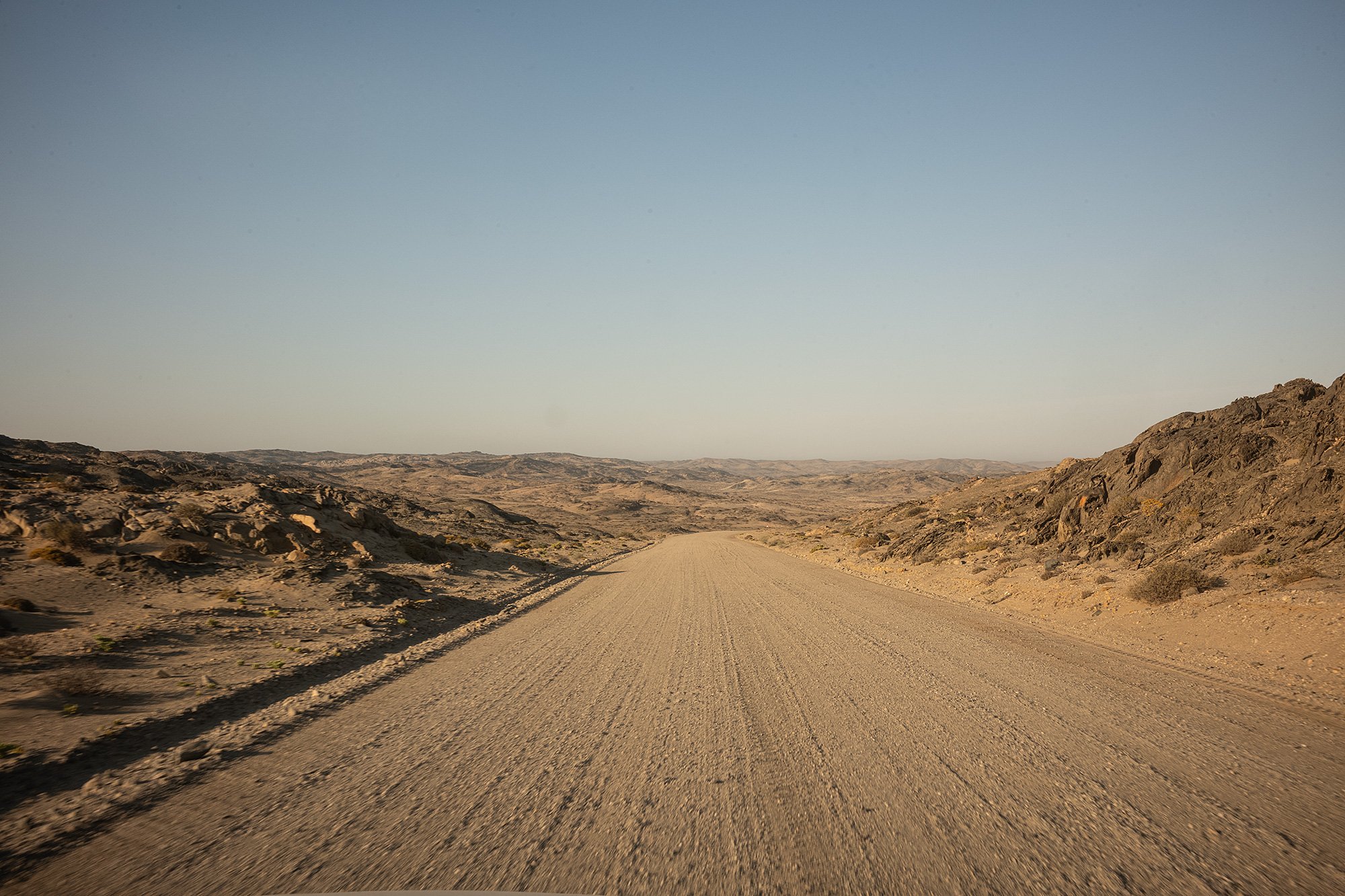

Near the point I spot a large group of flamingos on the beach. I stop the car and walk towards them, watching as they walk to and fro along the shore, skirting the tide as it comes in. I listen to their chatter and record a short film before moving on.
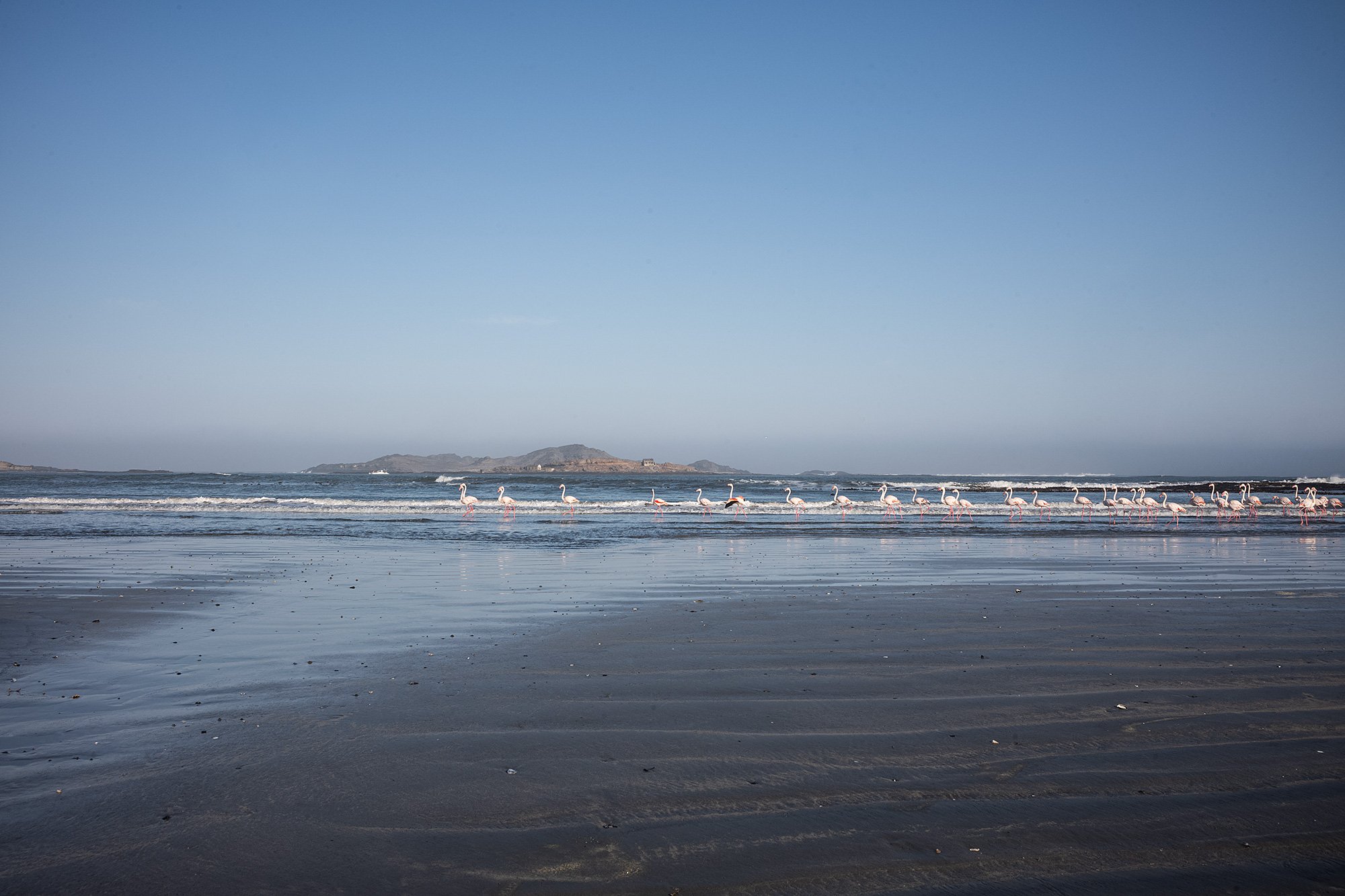
In 1488 Portuguese explorer Bartolomeu Diaz landed just south of Lüderitz and erected a stone cross upon a rocky outcropping that now bears his name. When I arrive the tide is coming in quickly, and a wooden bridge that once connected the rocky hill to the shore has washed away.
I pick my way across the rocks and marsh, leaping across narrow streams, careful to avoid areas where the water flows quickly. At one point, assessing the situation, I almost decide to turn back. But I’ve come this far and the cross is just across the way. Waves crash upon the rocks nearby.

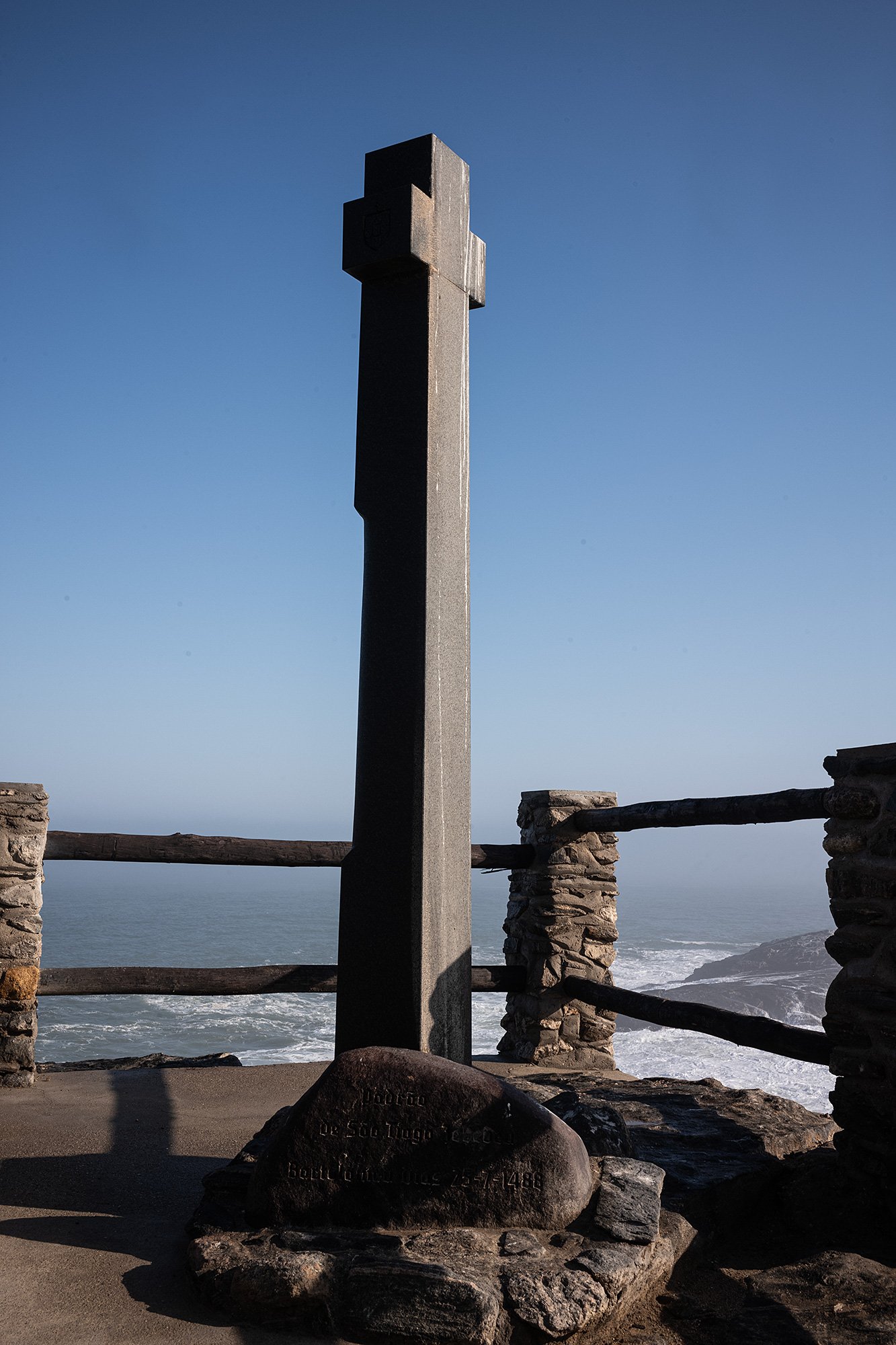
From the point there are hazy views out over the ocean and back towards the lighthouse. Water continues to fill the gaps between the mainland and the outcropping and I’m reminded of stories friends would tell of people trapped on similar outcroppings near Mont Saint Michel, when the tide would “rush in like horses.”
Climbing to this point was foolhardy and I decide to rush back before I am trapped myself.

I miss the path I took to the cross. I can’t find the narrower stream I leapt over and find what I think is the next best spot. I secure my camera and ready myself for the jump; I almost miss it. My back food drags in the water and I just clear the gap, landing on my left foot and using the momentum of the jump to throw myself foward onto solid ground. I breathe a quick sigh of relief and continue towards the shore, looking back once I’m ensconsed to see the tide claim more ground.

Leaving the point I pass by a cafe in the parking lot. I wave to the staff standing outside, glad to know that there are people nearby in case I did find myself stuck. It would have been a soggy wait, but knowing that people could have seen me gives me comfort.
I decide to follow the loop around to Grosse Bucht through the National Park. The drive starts clear but mists over as I head south towards the beach, the morning fog has yet to burn off completely.
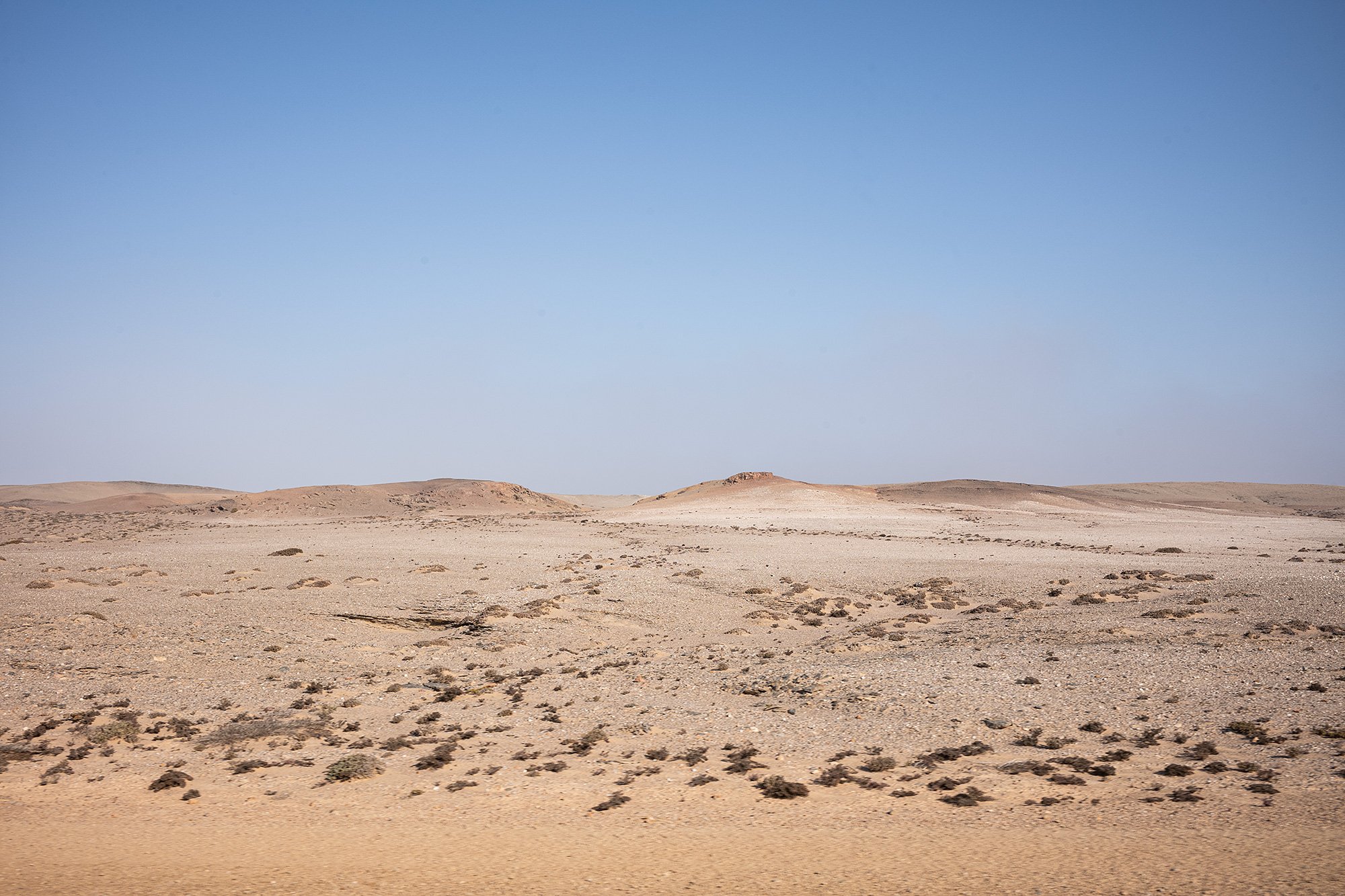
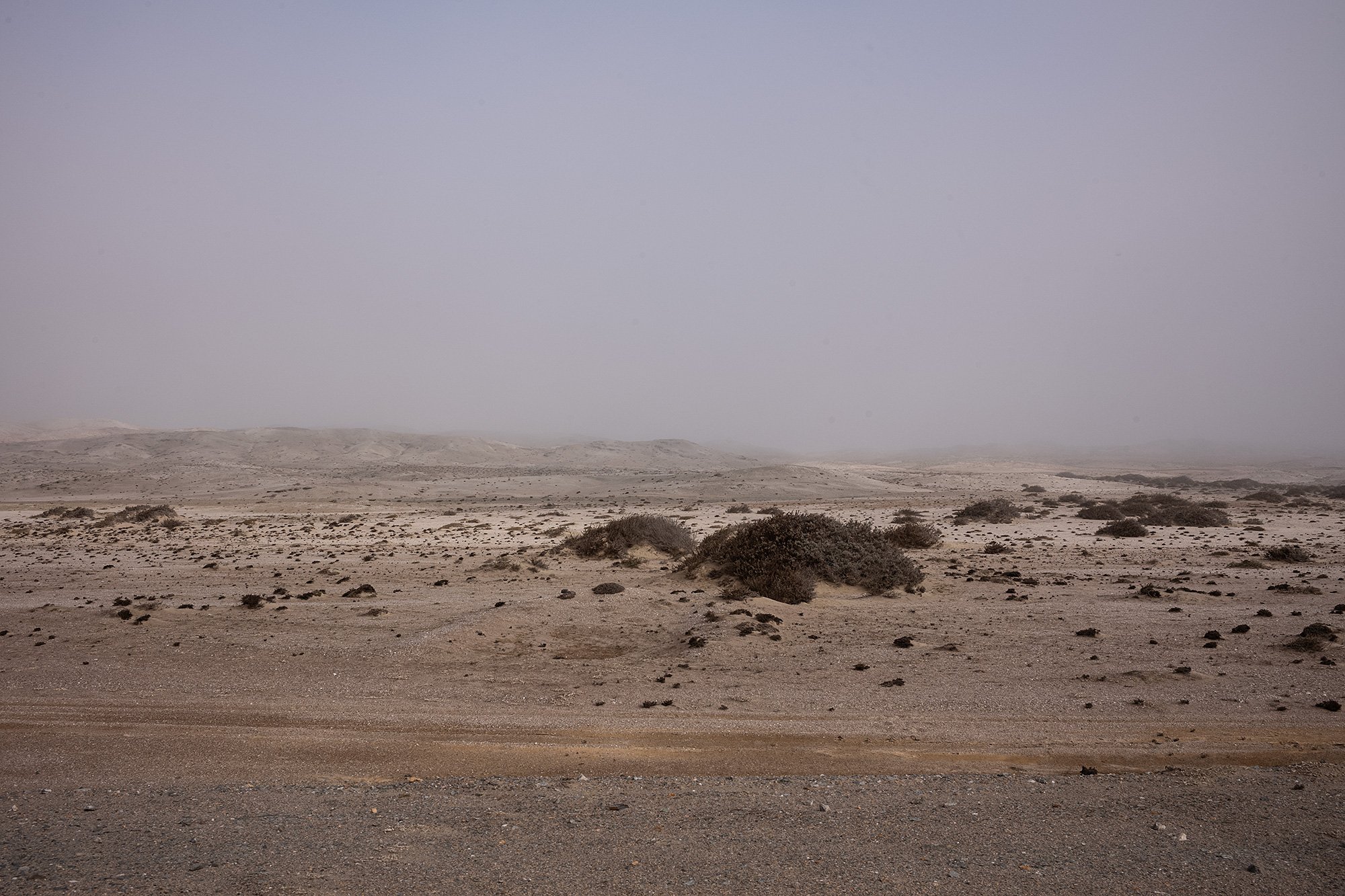
A lone flamingo patrols the beach. I can’t see the end of it. Fog obscures the horizon.

I cross the parking lot opposite the beach and watch the waves come in, foam forming at a small inlet.
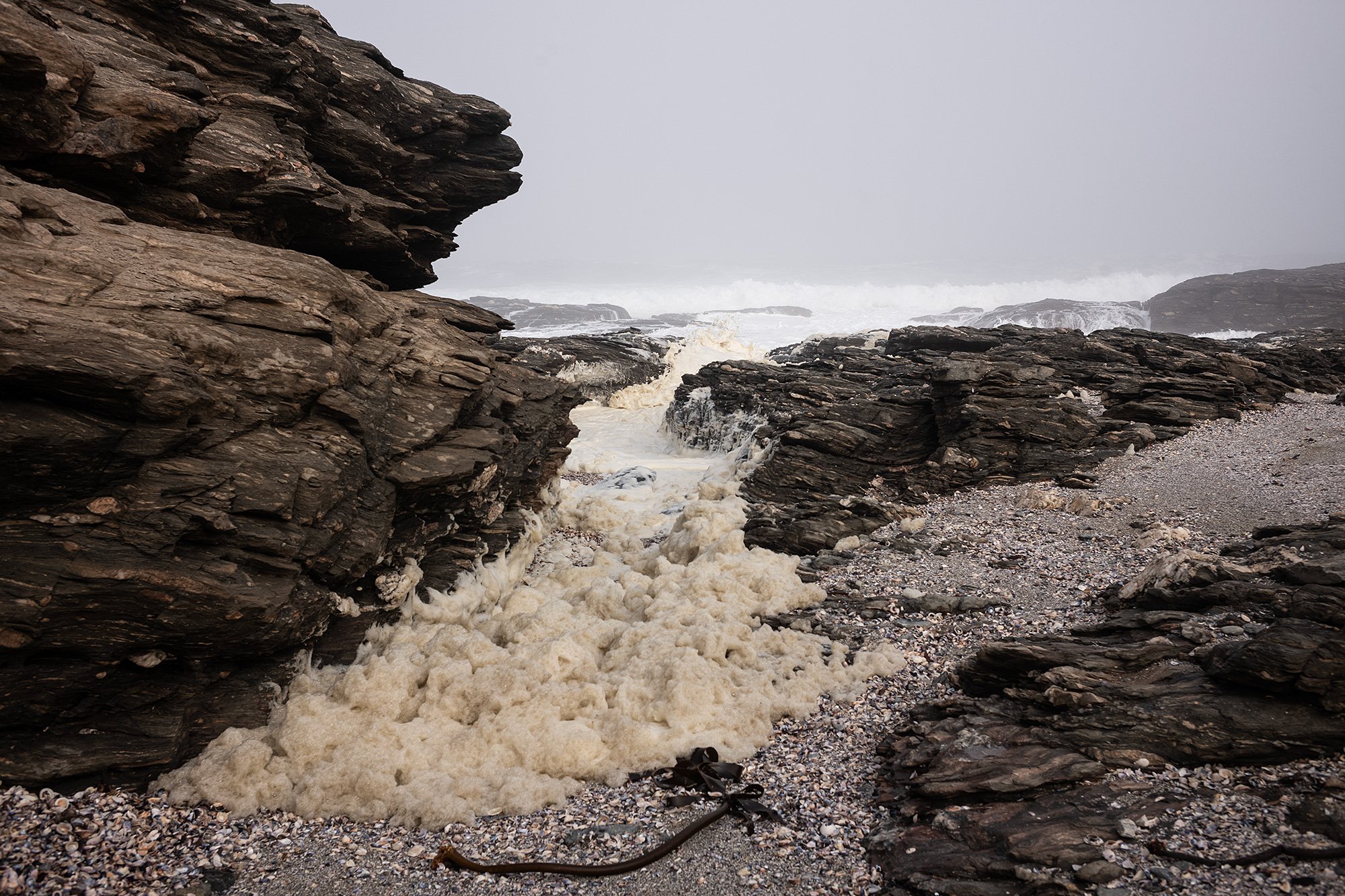
Leaving the beach, I wave to a man grading the road. He disappears in the dust and fog as I head back towards town.
Near the B4, I pass a football field. A lone worker sits in the net and I toss him a friendly wave before turning onto the tarred road.
Back in town, I stop at a gas station to fill the tank in preparation for my Friday departure. I won’t be taking the car out tomorrow and once I load the car I won’t want to stop once I’m heading out for the open road.
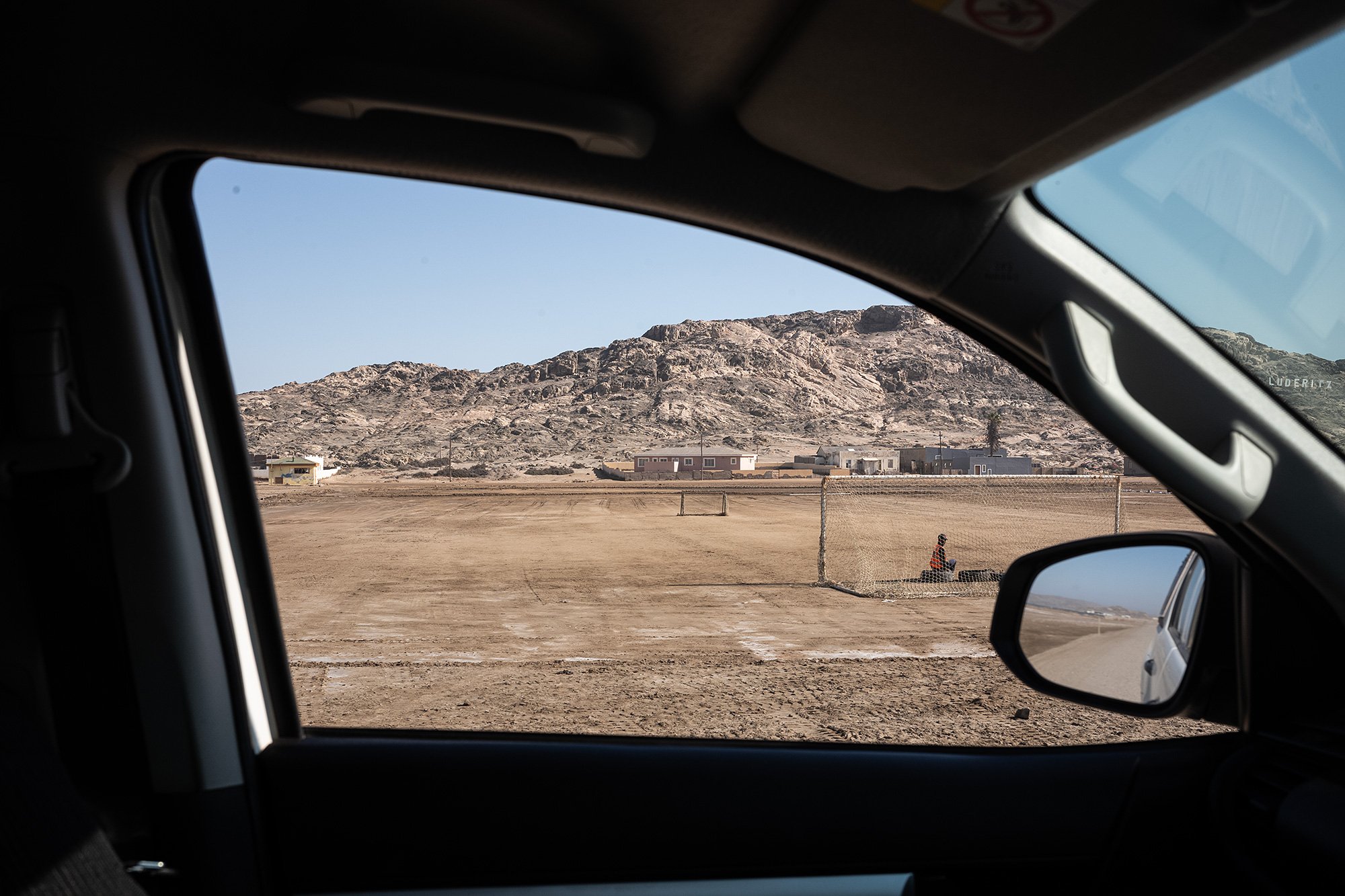
The next day is a rest day. I’m curious about the other rooms in the guesthouse and ask to see the apartment that sits on the top level of the main house.
The views over the city towards the ocean are magnificent. A table and chair have been set out on the private terrace to watch the sunset.
A cruise ship has docked in the marina and I wonder if I’ll see passengers in the streets on my daily walk.

After breakfast I climb the hill to the Felsenkirche to take a look inside. It was closed the day I arrived (a Sunday, surprisingly) and I want to see the stained glass panels within.
A small group of tourists precede me and I ask if they’re with the ship. They are not.
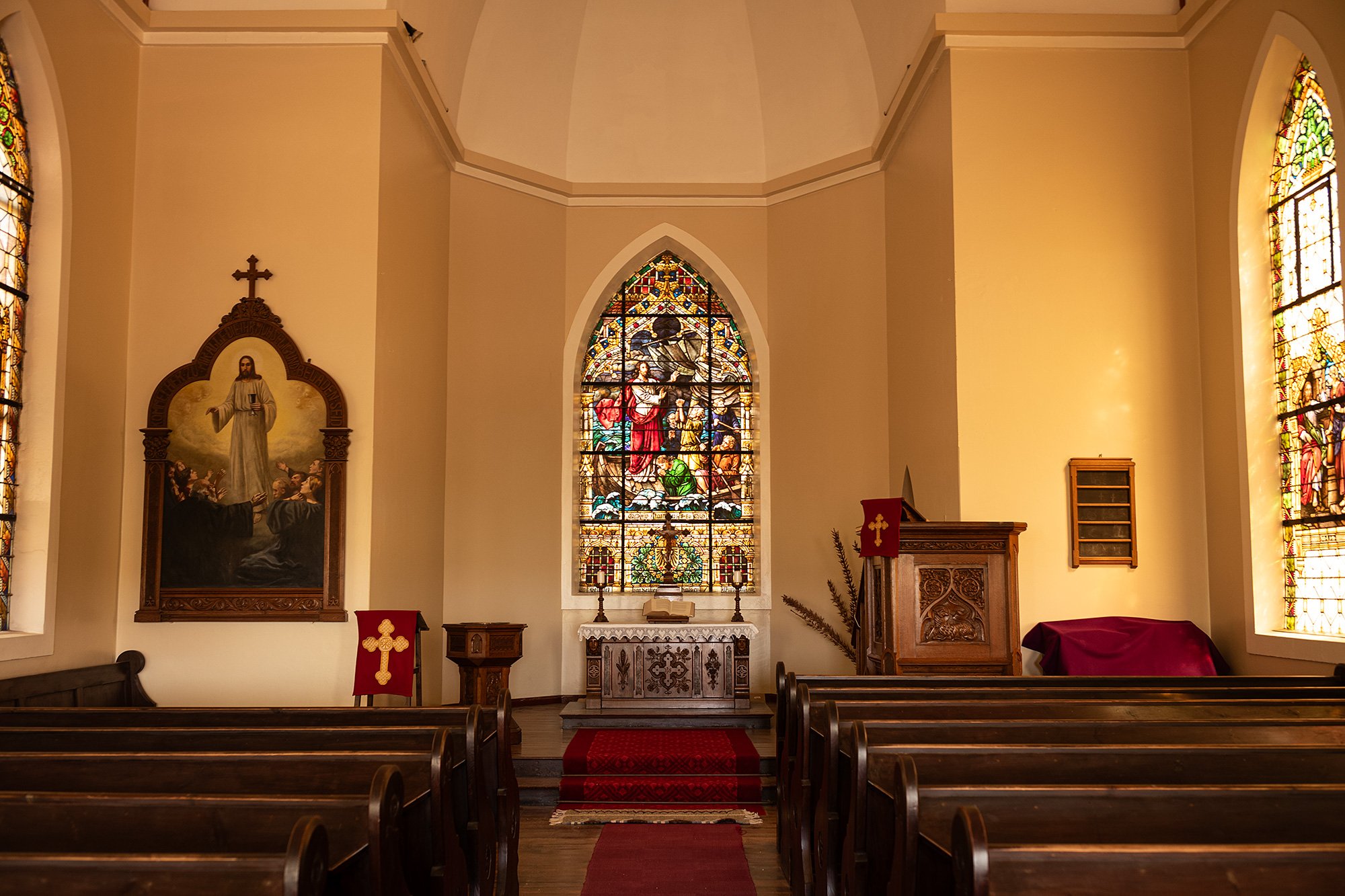

Coming down the hill I take a left and walk south along the road to explore a little more of the town. A large complex has been built with a restaurant and gym. A man driving by recommends the restaurant. I take a look, but it’s not the vibe I’m looking for, nor is the menu, but I’m glad of the walk and to see another side of Lüderitz.
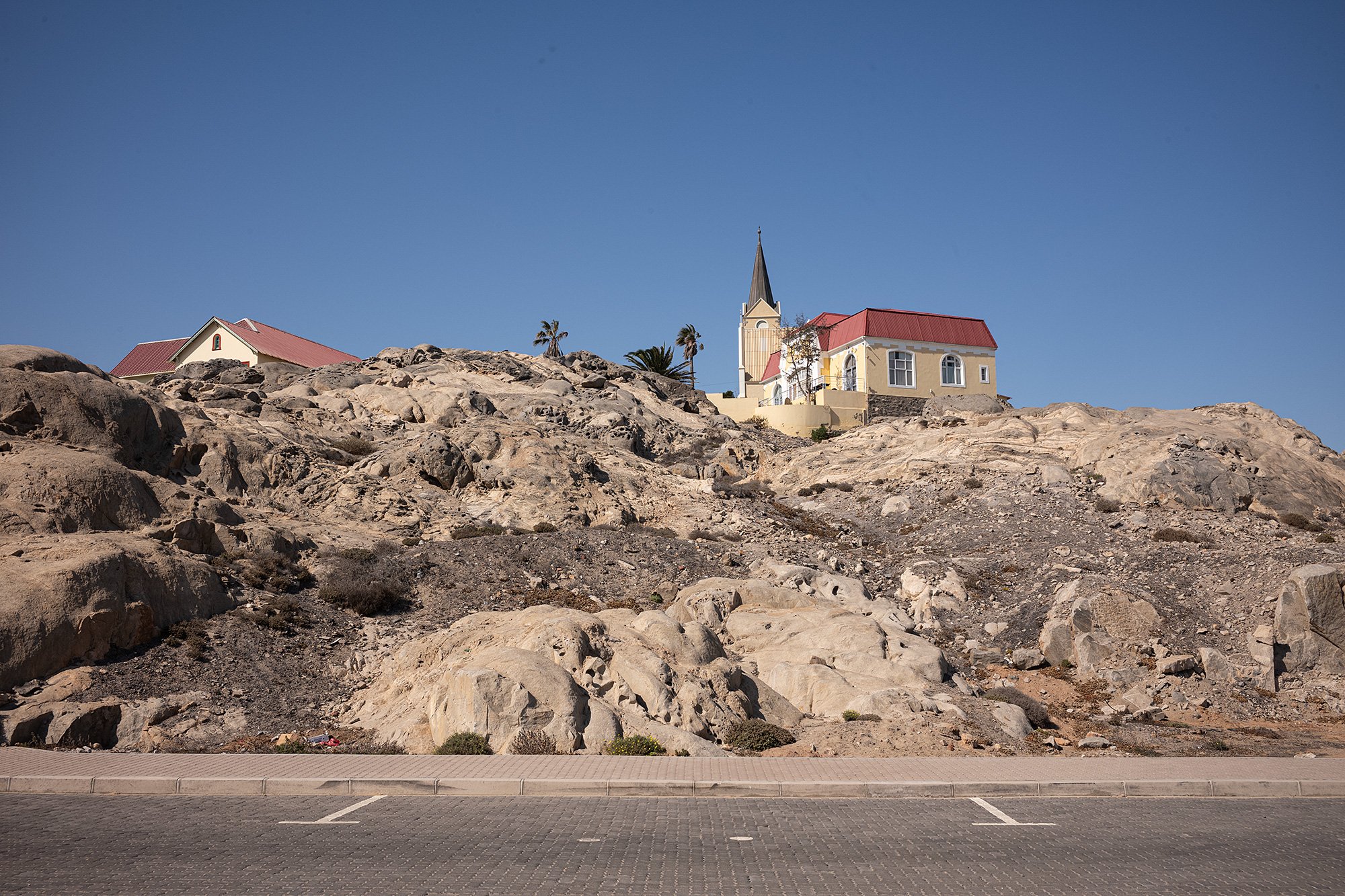

For lunch I return to The Portuguese Fisherman. I had asked Chanel if I would need to make reservations for lunch and she assured me it’d be ok. I say hello to her as I’m seated and tuck into a tasty kabeljou.


On my way back home I walk throgh the town center. Women sell fresh fruits and vegetables by the side of the road. A few days before I bought a small pack of nuts from a woman selling outside the grocery store. Today, I’m just looking.
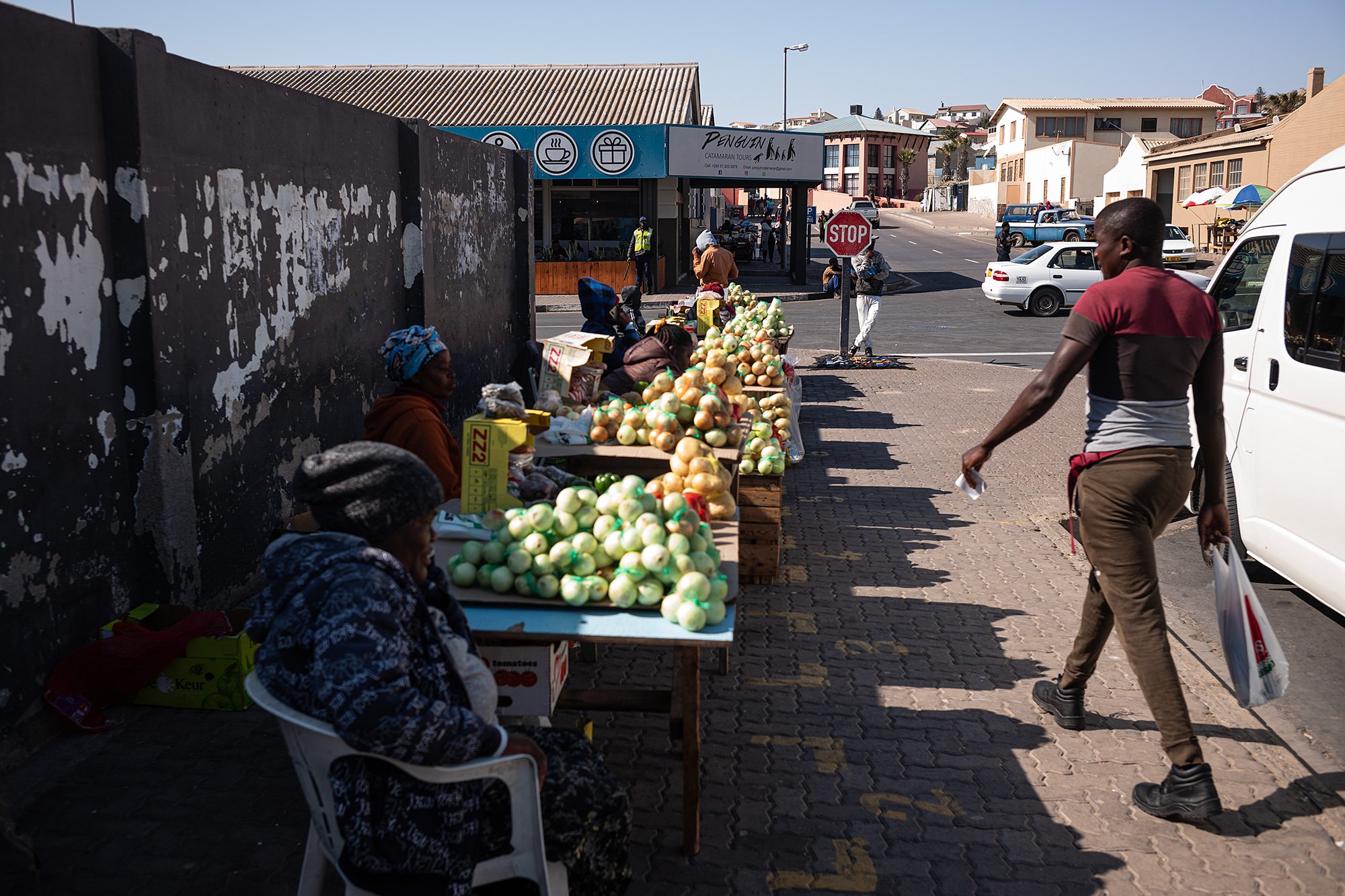

Tomorrow, I’ll be back on the road. I’ll miss Lüderitz, the guesthouse. I’ve been fortunate with the weather, however, having avoided the high winds for which it is notorious. The weather has been uniformly fair and mild. I’d love to return one day, but I’d return to a town transformed. And I always struggle with whether to compete with a perfect memory of a place. 🇳🇦
20 May 2024 to 23 May 2024
